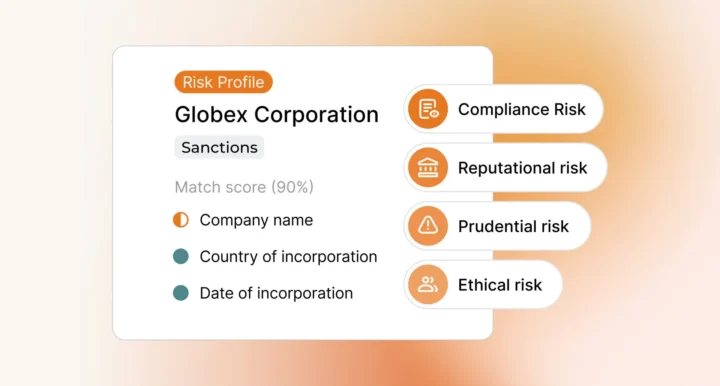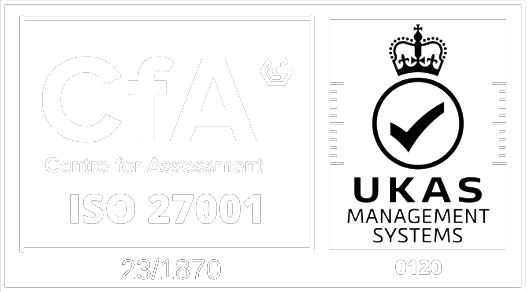Most successful banks and financial institutions understand that anti-money laundering (AML) compliance cannot be an afterthought. In 2025, regulators demand a proactive response to money laundering risk, which typically requires firms to go beyond templated screening and monitoring tools, and instead develop unique solutions that fit their operating environment.
That’s easier said than done. The risk-based AML regulatory landscape evolves constantly to account for new legislation and new criminal threats. This means that financial institutions have to reassess their compliance posture on an ongoing basis, and deal with emerging challenges and pain points as their solutions evolve.
Don’t let AML compliance challenges weigh your solution down. In this post we’re going to explore some of the key AML pain points that financial institutions face in 2025 – and provide some critical tips and insight into how to manage them.
Ongoing monitoring
A constantly changing AML risk landscape demands constant vigilance from the people responsible for spotting criminal activity. In practice, this means that financial institutions must find a way to facilitate ongoing monitoring of a range of money laundering risks, by screening customers effectively.
Two key examples of those ongoing monitoring challenges are:
Sanctions
In a turbulent geopolitical climate, governments issue new sanctions designations regularly, adding volume and complexity to the screening challenge. Russia’s 2022 invasion of Ukraine, for example, has seen Western governments issue an unprecedented amount of sanctions against Vladimir Putin’s regime – with strict liability penalties for firms that violate the rules.
The sanctions challenge is complicated by its global scope. Not only do compliance teams need to monitor sanctions lists, but peripheral data that also reveals customer risk. This means screening thousands of media sources, in foreign languages, and being sensitive to potential variations in spelling or naming convention which might confuse searches.
Politically exposed persons
It can be extremely difficult to establish whether a customer is a politically exposed person (PEP), and therefore poses a higher AML risk. PEPs are not just elected politicians, but can also include government employees, military officials, or holders of any prominent public position. Financial institutions may also seek to apply PEP risk to the family members and close associates of PEPs.
The PEP challenge doesn’t just involve detecting new PEPs following elections and other appointments, but deciding whether to declassify existing PEPs after they have left their position. Recent high profile cases have seen financial institutions face criticism for allegedly de-banking customers based on their PEP classification, or the classification of their relatives.
False positive alerts
The ongoing monitoring challenges listed above – sanctions and PEP screening – necessarily require financial institutions to collect and analyse vast amounts of customer data from internal lists, official lists, and media sources including news reports and even social media posts. In order to capture all potential threats and satisfy regulatory expectations, compliance solutions inevitably end up making incorrect risk assessments and generating false positive alerts, which need to be remediated.
Dealing with false positives is costly and time-consuming, especially if team members have to work through the alerts manually in order to establish true risk and remove incorrectly-applied alerts. It’s worth remembering that small adjustments to screening parameters can increase false positive rates significantly, slowing down the delivery of products and services, damaging customer experiences, and further draining employee attention and resources.
False negative alerts
While an over-sensitive screening solution generates higher volumes of false positive alerts, a solution that does not capture risk accurately risks generating false negatives – in which a high risk customer or transaction is incorrectly dismissed as presenting no risk. False negatives are arguably a more serious compliance consideration than false positives: solutions that generate too many false negatives expose financial institutions to unacceptable regulatory risk which can lead to legal consequences, including criminal penalties.
The difficulty in spotting false negative results is that, by definition, they aren’t flagged in any way by screening solutions. False negatives typically occur because compliance teams lack sufficient data to establish customer risk accurately, and fail to connect customer names to the data points that would help them make stronger decisions.
To manage, and prevent, false negatives, firms must first understand their common causes, which include:
- Screening parameters set too narrowly or set incorrectly
- A lack of high quality customer data
- Compliance analyst skill deficiencies
- A lack of multilingual search capabilities
- Poor name matching capabilities
- The de-duplication of news stories which leads to risk data being deprioritised or lost
- Reliance on manual name searches, such as Google searches
Compliance teams can address the false negative challenge by testing their screening solutions regularly, and running true positive customer data through a search process as a way of validating its accuracy. It may also be useful to scrutinise historical screening alert rates: if a system experiences a sudden drop-off in AML alerts, it’s likely that an adjustment to the search process, or an algorithmic issue has affected the accuracy of the solution.
Get ahead, and stay ahead, of AML compliance challenges
It’s not enough to understand where pain points might affect your AML compliance solution. Regulators expect financial institutions to be proactive in taking the necessary steps to overcome challenges and shore up vulnerabilities.
In a complex, constantly evolving regulatory landscape, that isn’t easy. Compliance teams must capture and analyse vast amounts of risk data in order to meet their responsibilities and establish true risk – while ensuring that data doesn’t generate an overwhelming amount of false positives or, worse, false negatives.
Manual screening processes typically struggle to manage these pain points efficiently, creating delays in the delivery of products and services, piling pressure on compliance analysts, and increasing the likelihood of human error. Financial institutions must find ways to help their compliance teams manage that burden, not least by integrating technology to automate as much of the screening process as possible.
While automation isn’t a magic bullet for AML compliance friction, it can accomplish in seconds tasks that would have taken human analysts hours to complete – and so enhance the speed and accuracy of the results, and any subsequent decision-making. Even better, automated screening solutions can be tailored to specific risk appetites and risk environments, meaning compliance teams can adapt quickly to both regulatory change and emerging criminal methodologies.
Overcome your AML compliance challenges with Ripjar
Last updated: 17 February 2025





